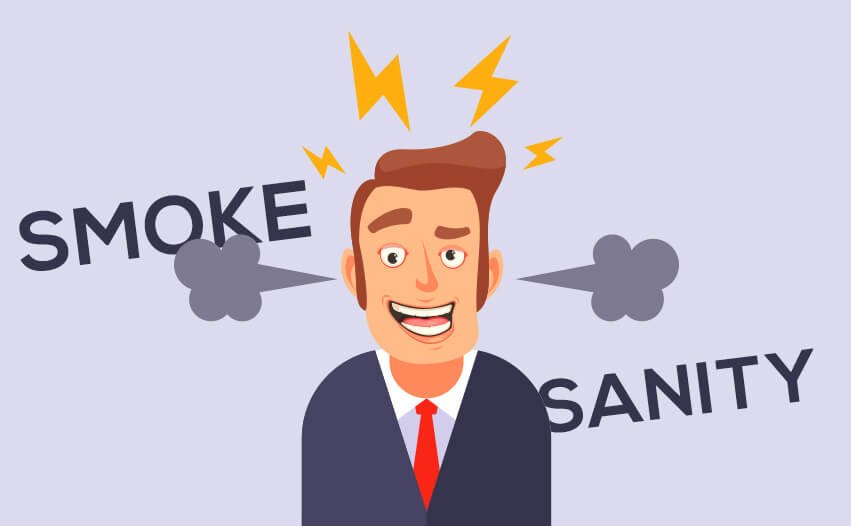Sanity testing and smoke testing are two QA techniques that aim to seek out software defects as quickly as doable. Sleuthing these problems early will eliminate the necessity for repetitive testing and post-deployment application rebuilds. Basically, smoke and sanity testing will build the testing method additional economical and cost-efficient.
Many similarities exist between smoke and sanity testing, however, it’s still necessary for testing groups to know the 2 testing types’ variations. Specifically, groups ought to perceive every technique’s underlying execution necessities, just like the different environments the tests run in and the kinds of team members concerned.
Defining sanity testing
Sanity tests are high-level assessments designed to confirm an application’s dependability. Specifically, this checking kind focuses on test cases that contain new options to spot defects within the build. Often, sanity checks conjointly embody a test of essential application workflows and integrations. Testing groups can usually perform sanity checking once there is not enough time to achieve full test coverage, particularly once it involves UI, cross-browser and mobile elements.
Agile development outlets will use sanity testing as a kind of mid-sprint QA. As a result of sprints usually beginning and ending quickly, groups will not typically have time to perform comprehensive regression testing. In a way, sanity testing will offer an alternative to regression testing, because the technique takes a slim look into application options to spot ingrained defects.
Sanity testing usually takes place in a very staging setting. These tests also can occur in UAT settings once development groups are fraught to push remediation for defects that are a gift in a very productive environment.
Defining smoke testing
Smoke checking is the style of test that ensures a build’s stability. It flushes out any high-severity, showstopper defects that forestall tests from continuing. The results of a smoke check verify whether or not a build meets quality-gate criteria. If it will meet the standards, QA will settle for the build into the setting and proceed with more testing. Underneath this approach, smoke testing could be a sort of acceptance testing.
Testing groups will execute smoke tests within the development setting aboard element integration, through QA and user acceptance testing (UAT), and — in some cases — in production environments. In DevOps environments, smoke testing is automatic and performed endlessly as an area of the continual integration method.
While testing groups are usually those World Health Organization execute smoke testing, developers will use these tests throughout builds to create positive elements that merge properly. In IT organizations that apply test-driven development, testers and developers will work along on smoke tests.
To create a smoke check suite, groups ought to target check cases that contain essential application practicality. as a result the smoke check suite can run oft, and groups ought to take into account finance in check automation. Automating the smoke check suite will increase checking potency and permit an additional comprehensive test that would be doable for QA professionals to perform manually.
That said, once a build contains advanced code, it’s best to apply to perform a couple of manual tests thereon code specifically. During QA, groups embody a couple of manual UI tests to confirm that there aren’t any high-severity user expertise problems. Such manual UI tests are notably necessary for IT organizations that apply continuous preparation.
Difference Between the smoke and sanity testing
The key variations between smoke and sanity testing come back right down to 3 major variables:
1. Scope of every testing type’s coverage
2. Role of automation
3. Once these tests occur
Essentially, smoke tests verify the stability of the build, whereas sanity tests focus on specific options and defects in the build. As result smoke tests verify the complete application at a high level, they’re usually seen as an area of acceptance testing. In this same vein, some QA professionals take into account sanity tests to be a restricted version of regression testing. After all, sanity tests concentrate on specific options and functions of a selected application.
When it involves automation, smoke testing is nearly perpetually scripted. Sanity testing, however, is primarily an unwritten method as a result it should target terribly specific application functions and options. Though checking groups will modify either style of test, sanity checking usually uses manual test cases so as to review notably advanced collections of code.
Finally, smoke and sanity testing needs a completely different temporal arrangement and programming. Organizations that apply Agile and DevOps methodologies can perform smoke testing early and sometimes throughout development. However, once the appliance is made, groups will execute sanity testing to verify the practicality of the latest options and appearance for any production-level defects to repair.



